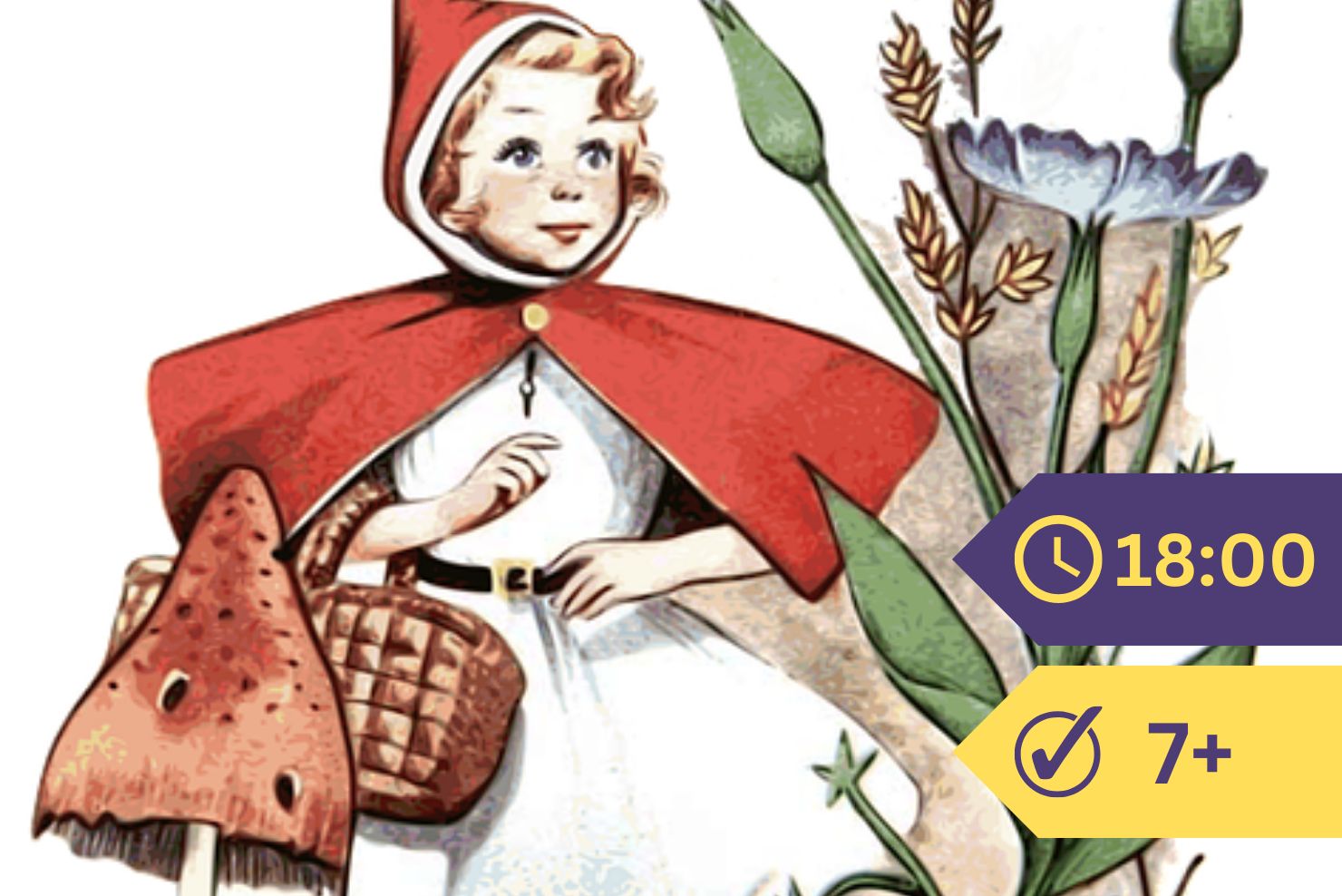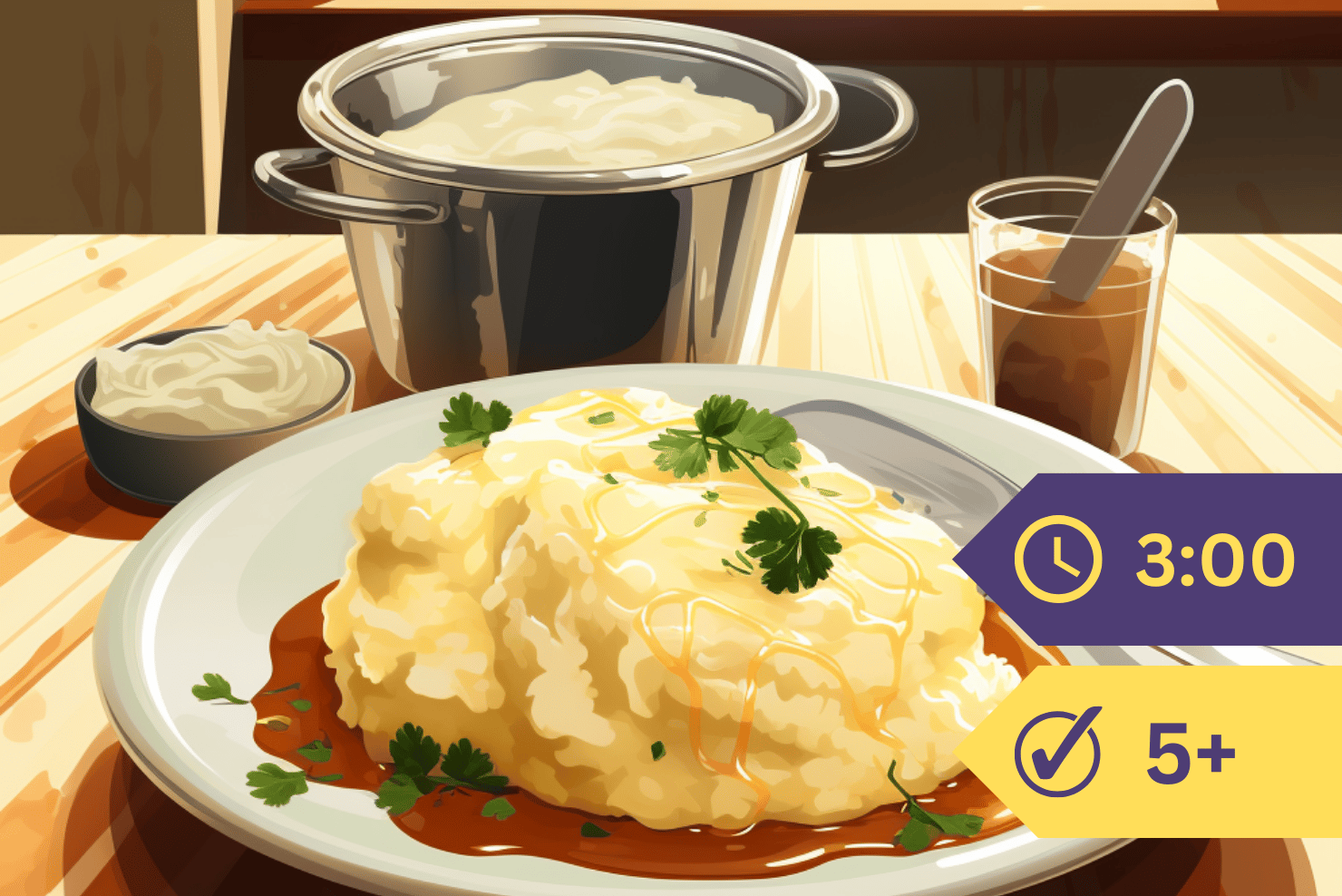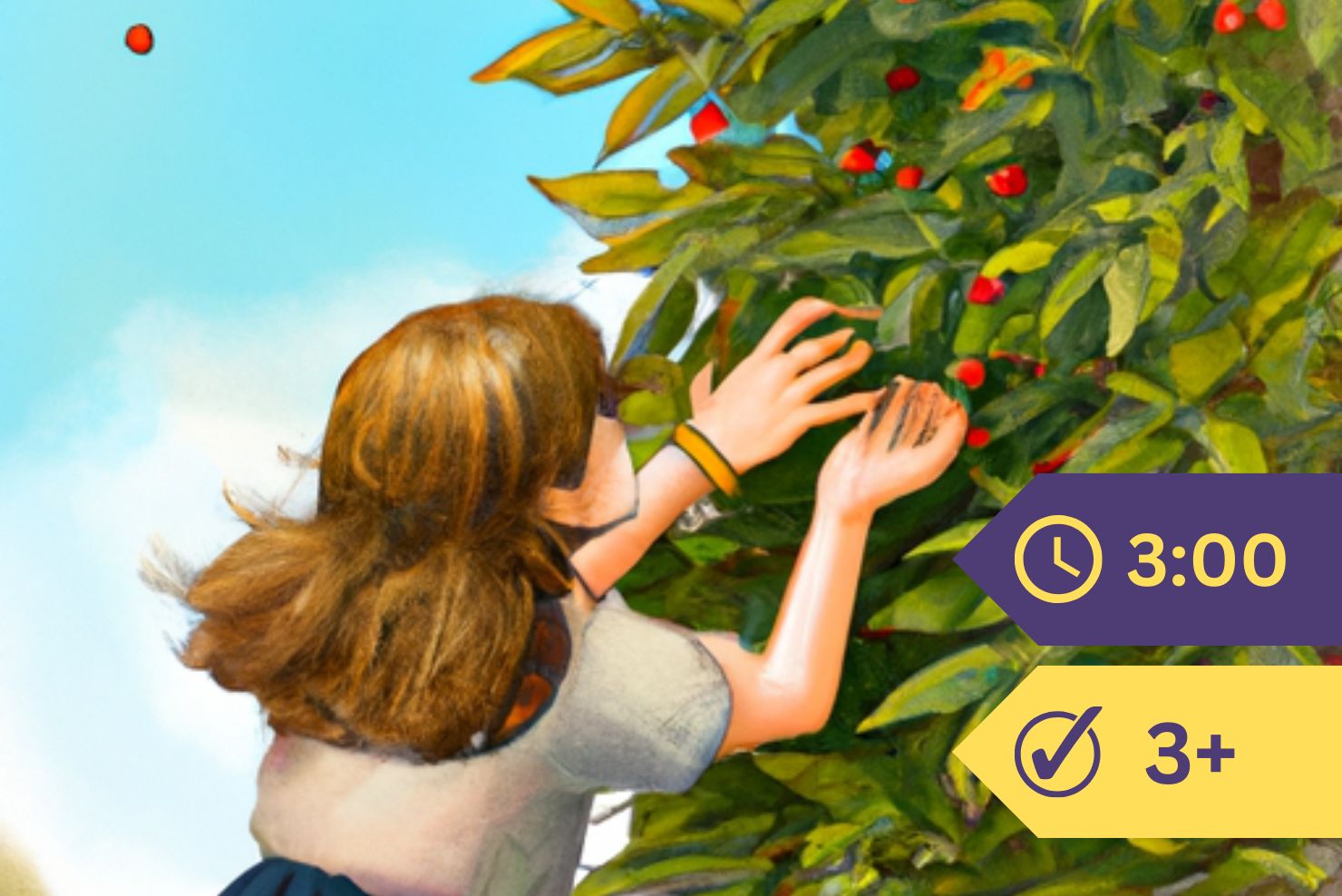In the last chapter you learned that the root of the bean plant has two uses.
It holds the plant in place, and it provides it with food and drink. Such a root as this of the bean plant—one that is made up of what looks like a bunch of threads—is called a “fibrous” root.
The next picture shows you the root of a beet plant.
Such a thick, fat root as this of the beet is called a “fleshy” root. The carrot, turnip, radish, and sweet potato, all have fleshy roots.
This beet root, like that of the bean, is useful both in holding the plant in place and in providing it with food and drink.
But the fleshy root of the beet does something else,—something that is not attempted by the fibrous root of the bean.
Here we must stop for a moment and look into the life of the beet plant.
During its first year, the beet puts out leaves; it neither flowers nor fruits, but it eats and drinks a great deal. And as it does not use up any of this food in flowering or fruiting, it is able to lay by much of it in its root, which grows large and heavy in consequence. When the next spring comes on, the beet plant is not obliged, like so many of its brothers and sisters, to set out to earn its living. This is provided already. And so it bursts into flower without delay, its food lying close at hand in its great root.

So you see that a fleshy root, like that of the beet, does three things:—
- It holds the plant in place.
- It provides it with food and drink.
- It acts as a storehouse.
These plants that lay by food for another year are useful as food for man. Their well-stocked roots are taken out of the ground and eaten by us before the plant has had the chance to use up its food in fulfilling its object in life, that of fruiting. Of course, when it is not allowed to live long enough to flower and fruit, it brings forth no young plants. So a habit which at first was of use to the plant becomes the cause of its destruction.
Perhaps you think that the white potato is a plant with a fleshy root.
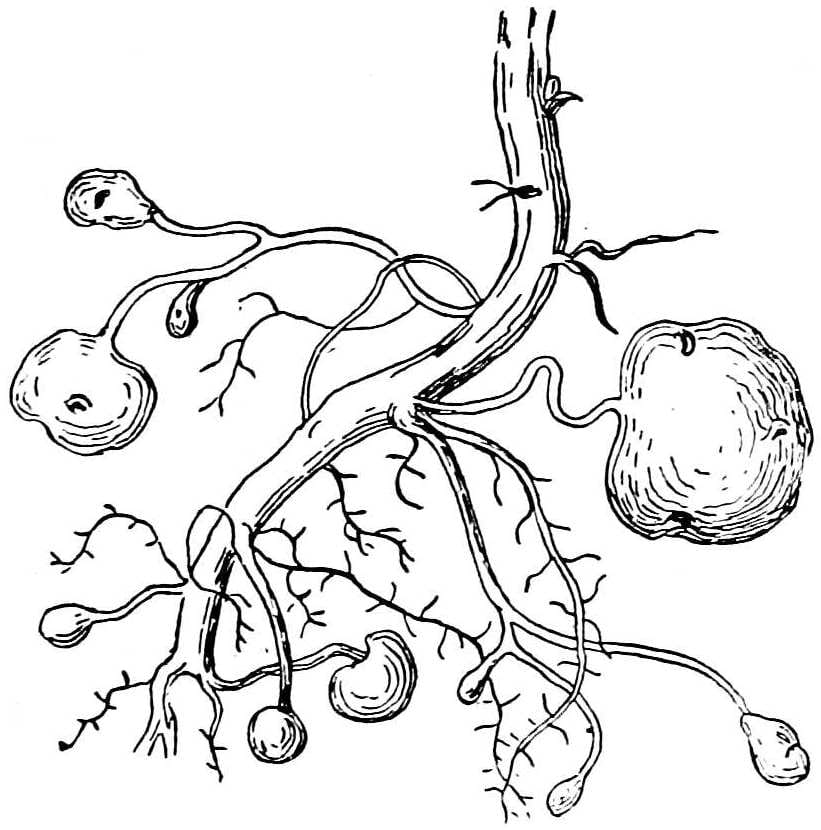
If so, you will be surprised to learn that this potato is not a root at all, but a stem.
You think it looks quite unlike any other stem that you have ever seen. Probably you do not know that many stems grow underneath the ground, instead of straight up in the air.

If you find something in the earth that you take to be a root, you can feel pretty sure that it really is a stem, if it bears anything like either buds or leaves. A true root bears only root branches and root hairs. But in this white potato we find what we call “eyes.” These eyes are buds from which new potato plants will grow. Close to these are little scales which really are leaves. So we know that the potato is a stem, not a root. But this you could not have found out for yourselves, even with the sharpest of eyes.
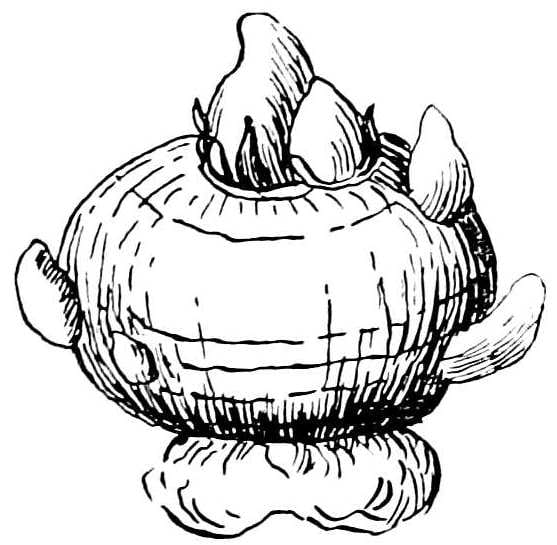
This picture shows you the thick, fat, underground stem of the cyclamen. From its lower part grow the true roots.
Next you have that of the crocus, while here to the right is that of the wood lily. This is covered with underground leaves.

All these stems are usually called roots. In the botanies such an underground stem as that of the Jack-in-the-pulpit is named a “corm,” while one like that of the crocus is called a “bulb”. All have a somewhat rounded shape.

During our walks in the woods last fall, often we found the Solomon’s seal, and stopped to admire its curved stem, hung with blue berries. I hope one of you boys whipped out your pocketknife and dug into the earth till you found its underground stem. This was laid lengthwise, its roots growing from its lower side. From its upper side, close to one end, sprang the growing plant. But what causes those round, curious-looking scars?
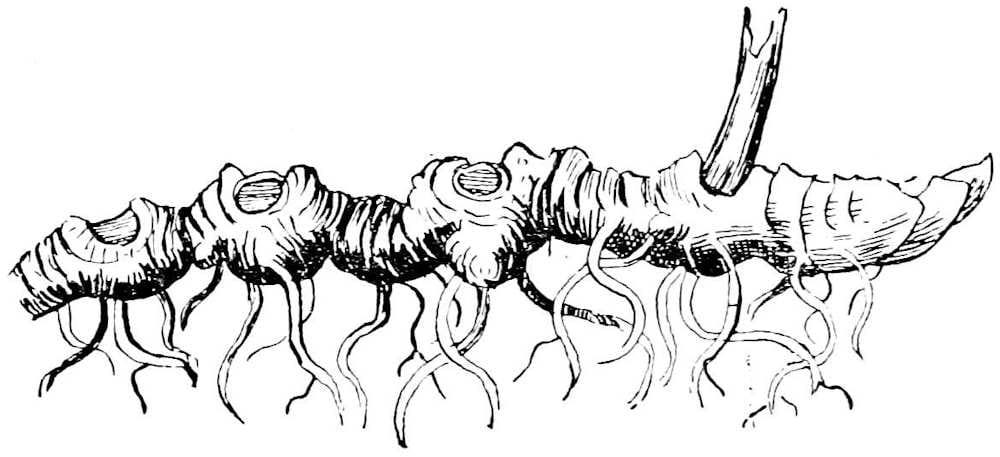
These scars are what give the plant its name of “Solomon’s seal.” They are supposed to look like the mark left by a seal upon wax.
They show where the underground stem has budded in past years, sending up plants which in turn withered away. Each plant has left a scar which shows one year in the life of the underground stem.
Next spring when you find in the woods the little yellow bells of the Solomon’s seal, I think you will have the curiosity to dig down and find out the age of some of these plants.
Another plant with an underground stem is the beautiful bloodroot. As its name tells you, this so-called root contains a juice that looks something like blood. Such underground stems as those of the Solomon’s seal and bloodroot are called “rootstocks.” Rootstocks, corms, and bulbs are all storehouses of plant food, and make possible an early flowering the following spring.




